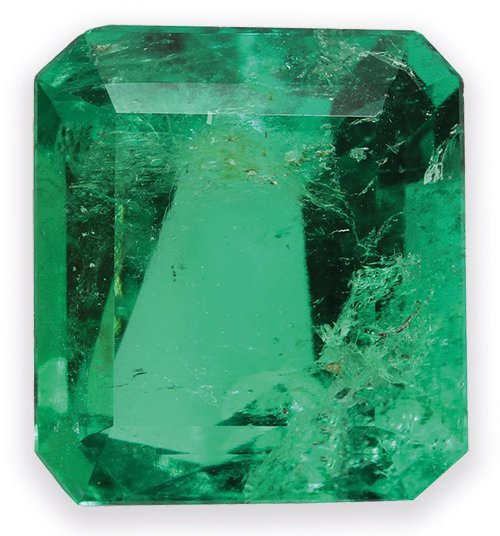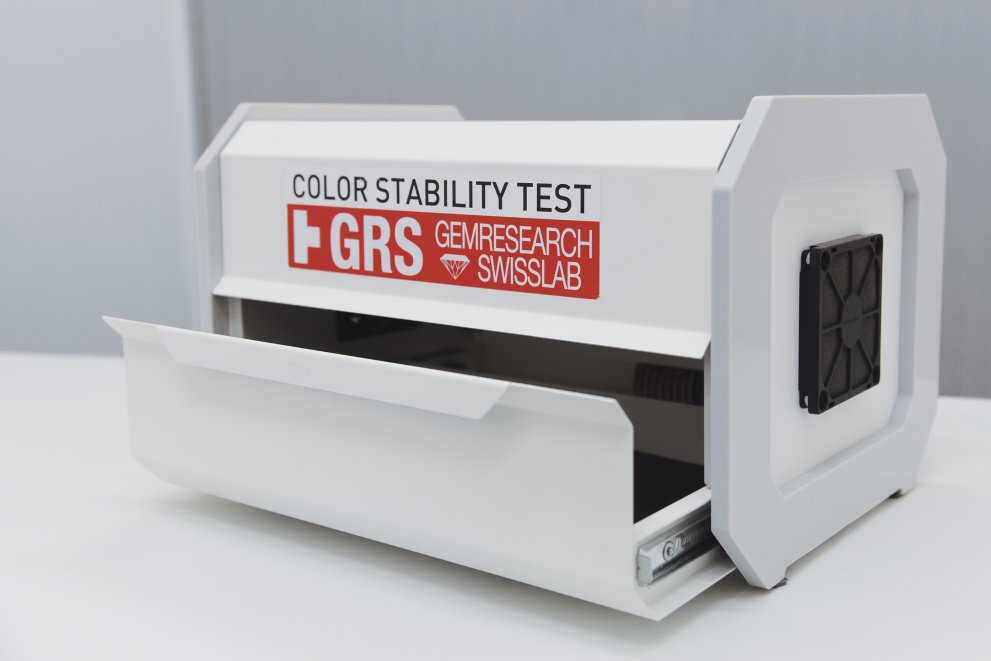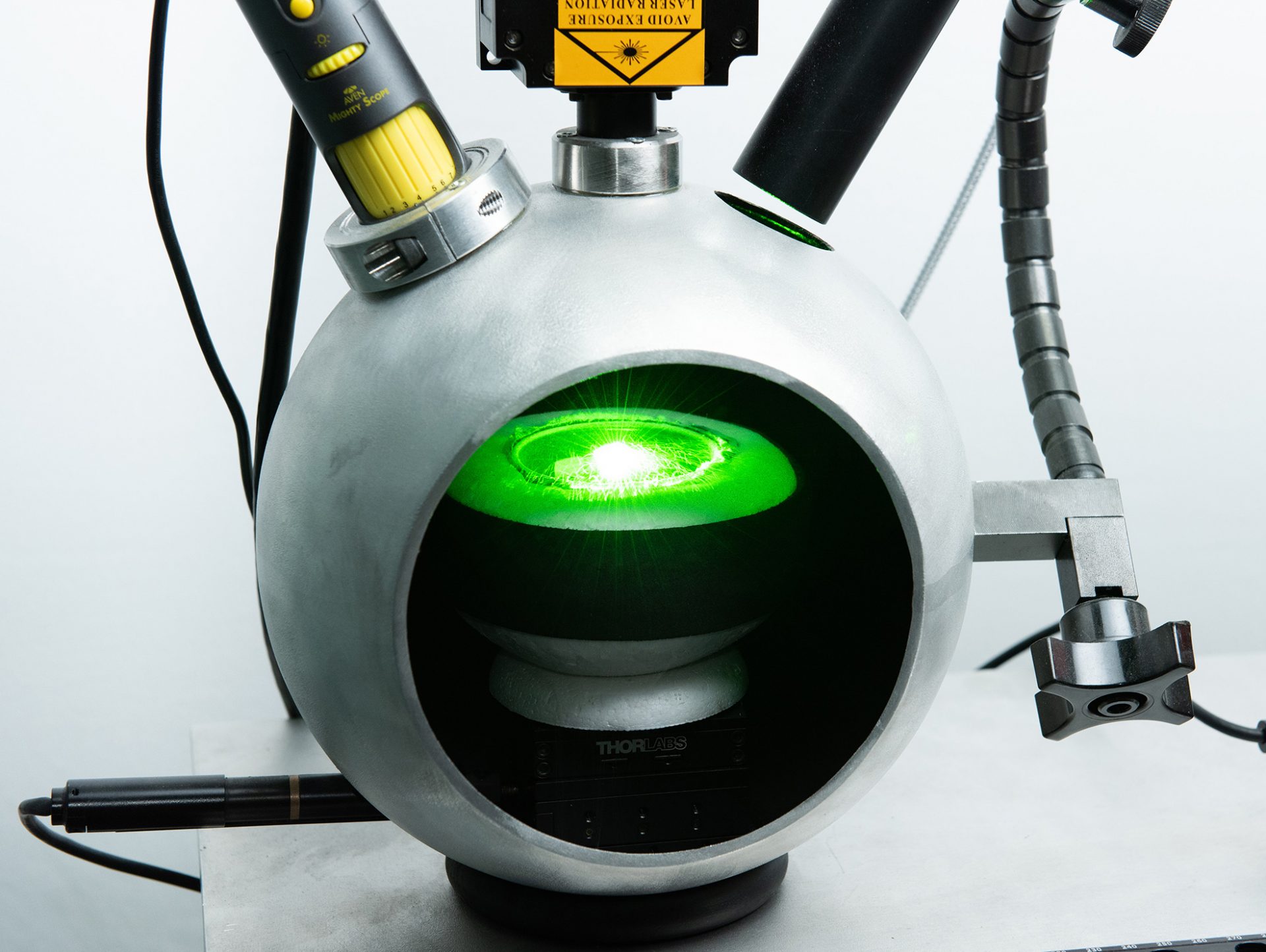Gemstone Enhancement Disclosure
Ruby and Sapphire
| No indication of thermal treatment |
|---|
| No gemological constraints (for instance no altered inclusions) are present that would indicate that a heat enhancement process was applied. |
| H |
|---|
| Enhanced by heat (no residues present) |
| H(a) |
|---|
| Enhanced by heat – residues insignificant (indication of very small residues within fissures only). Clarity and/or color are enhanced by heat. The applied type of enhancement for the ruby or sapphire under consideration is, according to the opinion of GRS GemResearch Swisslab, considered a permanent enhancement. Extremely small residues of glass-like materials present in cavities or as isolated, extremely small residues in fissures that affect the weight of the gemstone less than approximately 0.001 carat. ‘A-type treatment’ present in the ruby or sapphire under consideration are, according to the opinion of GRS GemResearch Swisslab, permanent enhancements. Enhancements such as ‘type A’ are considered permanent and will always be mentioned on the front page of the report. |
| H(b) |
|---|
| Enhanced by heat – minor residues are present (within fissures only). Clarity and/or color are enhanced by heat. Minor residues of glass-like materials are present in fissures. Enhancements such as ‘B-type treatment’ are considered permanent and will always be mentioned on the front page of the report. |
| H(c) |
|---|
| Transitional grade between H(b) and H(d). Clarity and/or color are enhanced by heat. Residues of glass-like materials are present in cavities and/or in fissures. Enhancements such as ‘type C’ are considered permanent and will always be mentioned on the front page of the report. |
| H(d) |
|---|
| Enhanced by heat – significant and deep reaching residues present within fissures and cavities filled with lead glass (also known as "Composite Ruby") |
| H(Be) |
|---|
| Enhanced by heat and light elements (such as beryllium). Clarity and/or color are enhanced by heat and diffusion of light elements such as beryllium, inducing color zoning by internal migration of trace elements (incl. beryllium) and defects, and formation of color centers. Treatment (not corresponding to conventional surface diffusion treatment) is permanent. Recutting requires special care if thin orange rims are confined to the surface. |
| PHT (HPHT) |
|---|
| Enhanced by pressure and high temperature (PHT). Color enhanced by high heat under relatively high pressure (not comparable to HPHT treatment applied to diamonds). |
| E |
|---|
| Clarity and/or color are enhanced by heat (minor residues of foreign solid materials may be present within fissures and/or cavities). * This comment is not in use anymore but might be seen on older reports. |
Emerald
CE(O): Grading of clarity enhancement of emeralds
The comment ‘Non-enhanced clarity features present’, indicates the presence of empty or dried out fissures at the time of examination. Non-enhanced clarity features are graded in accordance to their visual relevance: "very minor, minor and prominent". When graded “prominent", obvious white/untreated areas of a stone's cracks are visible. Such stones will not qualify for GRS-type colors and will be marked with the additional comment: "Color grading not applied”.

Other possible gemstone treatments specified on GRS gemstone reports
- Coating
- Dyeing
- Application of colorless oil or epoxy-like resins
- Irradiation, use of nuclear bombardment
- Conventional surface diffusion, or any combination of the above
Color Stability Testing
Color fading is a natural phenomenon observed in certain gemstones, particularly with orange to yellow sapphires. This reversible phenomenon occurs when the sapphire is exposed to a certain type of light. The light sources emission energy will eventually induce a color-change, effectively reducing the yellow or orange component of that sapphire. For example, an orangy-pink Padparadscha sapphire can change to a pink sapphire color. The original color can be reinstated after irradiation exposure to a particular light source such as a long-wave UV-light.

GRS developed a proprietary color stability test in the form of a fully integrated lightbox testing facility. This is the first fully automated and standardized color stability test that can charge, discharge and then recharge a client’s gemstone whilst accurately documenting each occurrence.This elective test can be performed in addition to our standard service.GRS has established four categories in which we divide the tested gemstones. After color stability testing has been performed, the observed results will be reported as follows on the GRS Gemstone Report:
TYPE 1
Comment on main report: Color stability test applied: Type 1
Comment on appendix: The GRS color stability test was applied. No indication of fading was observed (GRS-type “CST 1”). Post-testing exposure to UV- or sunlight will not decrease the color saturation and/or cause a change in hue.
TYPE 2a
Comment on main report: Color stability test applied: Type 2a
Comment on appendix: The GRS color stability test was applied. Indication of orange and/or yellow component fading was observed. A padparadscha color is visible in both the discharged and charged state (GRS-type “CST 2a”). Post-testing increase of color saturation and/or change of hue by exposure to UV- or sunlight is possible.
TYPE 2b
Comment on main report: Color stability test applied: Type 2b
Comment on appendix: The GRS color stability test was applied. Indication of orange and/or yellow component fading was observed. No padparadscha color is visible in the discharged state (GRS-type “CST 2b”). Post-testing increase of color saturation and/or change of hue by exposure to UV- or sunlight is possible.
TYPE 3a
Comment on main report: Color stability test applied: Type 3a
Comment on appendix: The GRS color stability test was applied. Indication of orange and/or yellow component increase was observed. A padparadscha color is visible in both the discharged and charged state (GRS-type “CST 3a”). Post-testing increase of color saturation and/or change of hue by exposure to UV- or sunlight is possible.
TYPE 3b
Comment on main report: Color stability test applied: Type 3b
Comment on appendix: The GRS color stability test was applied. No padparadscha (or vivid yellow or orange) color is visible in the discharged state (GRS-type “CST 3b”). Post-testing increase of color saturation and/or change of hue by exposure to UV- or sunlight is possible.
TYPE 4
Comment on main report: Color stability test applied: Type 4
Comment on appendix: The GRS color stability test was applied. Indication of fading was observed (GRS-type “CST 4”). Post-testing increase of color saturation and/or change of hue by exposure to UV- or sunlight is not possible.
Potentially applies to: Padparadscha Sapphires, Yellow Sapphires, Orange Sapphires (heated and unheated)
Other possible comments on GRS reports
| PL tested |
|---|
| The stone has been tested with a photoluminescence spectrometer. |
| LIBS tested |
|---|
| The stone has been tested with a laser-induced breakdown spectrometer. We use this method to check heated sapphires for possible beryllium-diffusion treatments. |
| Raman tested |
|---|
| The stone has been tested using a Raman spectrometer. This test is often used to identify minerals or individual parts of gems or ornamental objects. |
| FTIR tested |
|---|
| The stone has been tested using a FTIR spectrometer. |
| ED-XRF tested |
|---|
| The stone has been tested using a EDXRF spectrometer. EDXRF spectrometers are used to analyse the chemical composition of the tested material. |
Please go to the page Analytical Methods for more information. If there should be comments on the report which you don’t understand, please contact us directly for further clarifications.
Update of GRS online report verification terms
The voluntary support of GRS reports in the GRS online report verification system is limited to 5 years.
We recommend that stones with older reports (and even more recent ones) to be re-checked and updated for the following reasons:
1. A report might have been re-called by GRS and/or an update has been made and the old invalid report is still used in violation of the contractual agreement with GRS.
2. A stone might have been re-cut (different weight) and/or the stone has been altered and the report is still in use without actually representing the stone's current condition.
3. Technological capabilities, international knowledge, and research findings have been expanded, and the conclusion regarding the stone's origin, treatments, or other terminology used on the report needs to be updated.
GRS recommends that all stones to be re-checked at the time of purchase and when changing ownership to prevent misunderstandings, particularly but not limited to the three points outlined above.
Important information and limitation of the use of GRS Gemresearch Swisslab gemstone reports
All GRS Gemresearch Swisslab AG gemstone reports will be printed on original paper (marked with GRS) and will bear an official signature. No corrections or alternations of any form shall be accepted on the gemstone report. All gemstone reports are laminated for protection. The gemstone reports trademarks such as GRS, H(a), E(IM), GRS-type ‘pigeon’s blood’ or service marks of GRS Gemresearch Swisslab AG may not be reproduced in whole or in part without the prior written authorization of GRS Gemresearch Swisslab AG. This GRS report must contain two GRS holograms otherwise this report is not valid. A GRS Gemresearch Swisslab AG gemstone report contains the identification of gemstones by photographic images, descriptions, dimensions and weight. It states an opinion on their authenticity, treatment, country of origin (if determinable), quality and rarity (does not always apply). This GRS report does not constitute a guarantee for or an appraisal of the object or gemstone described there in. The physical appearance of an object or gemstone may differ from its photographic image on the gemstone report. Determination of the authenticity and country of origin of a gemstone is based on the analysis of its chemical and physical properties and internal characteristics (e.g. inclusions and growth structures) using standard gemological instruments and modem analytical instruments including spectrometers. The conclusion on the country of origin, authenticity and treatment of gemstones is an opinion of the laboratory based on the direct comparison of the findings with those obtained from the analyses of reference materials, as well as those in published literature. The laboratory to the extent reasonably possible continuously updates this knowledge.
Unless expressly disagreed by the client, the enhancement of rubies and sapphires are mentioned under ‘comments’ as follows:
• No indication of thermal treatment – No gemological constraints (for instance no altered inclusions) are present which would indicate that a heat-treatment process has been applied. • E Clarity and/or color are enhanced by heat. Minor residues of foreign solid materials may be present within fissures and/or cavities. The applied type of enhancement of the ruby or sapphire under consideration is considered a permanent enhancement according to the opinion of GRS Gemresearch Swisslab AG. Detailed analyses of the residues present in the gemstone include the following grading (abundance of healed fissures not graded below):
• H – Enhanced by heat (no residues present) • H(a) or E – Enhanced by heat, residues insignificant (indication of very small residues within fissures only) • H(b) or E – Enhanced by heat, minor residues are present (within fissures only) • H(c) is a transitional grade between H(b) and H(d) • H(d) – Enhanced by heat, significant residues present (within fissures and cavities). • H(Be) – Enhanced by heat and light elements such as beryllium. Clarity and/or color are enhanced by heat and diffusion of light elements such as beryllium inducing color zoning by internal migration of trace elements (including beryllium) and defects and the formation of color centers. Not corresponding to conventional surface diffusion treatment. The treatment is permanent. Recutting requires special care if thin orange rims are confined to the surface.
The grading of clarity enhancements of emeralds are specified as CE(O): • None • Insignificant • Minor • Minor to Moderate • Moderate • Significant. The comment ‘Non-enhanced clarity features present’, indicates the presence of empty or dried out fissures that were present during examination. If the treatment is graded as ‘moderate’ or ‘significant’, the presence of resin will be explicitly mentioned.
Other possible treatments will be specified on the front page as follows: • Coating • Dyeing • Application of colorless oil and/or epoxy-like resins and/or wax • Irradiation (application of nuclear bombardment) • Conventional surface diffusion treatment or any combination of the above.
Common abbreviations used on GRS reports; • LIBS – Laser Induced Breakdown Spectroscopy • FTIR – Fourier Transform Infrared Spectroscopy • EDXRF – Energy Dispersive X-Ray Fluorescence • PL – Photoluminescence • UV-VIS – Ultraviolet-Visible Spectroscopy
Any opinion on the quality and rarity of the gemstone under investigation is issued only upon request and only if the stone meets GRS’ internal requirements. It represents an opinion based on the practical experience of the laboratory. The laboratory may refuse the issuance of a gemstone report at any time. Unless expressly agreed upon otherwise, the client agrees not to hold GRS Gemresearch Swisslab AG liable for the loss or damage of the gemstone resulting from risks that may occur during the transportation and delivery process, including robbery and theft; during the examination process, including color and clarity alteration or other alteration of the object or gem material including removal of fissure fillings in the gem material; and while the gemstone is in the possession of GRS Gemresearch Swisslab AG, including theft negligence and natural acts of God. And unless expressly agreed otherwise, GRS Gemresearch Swisslab AG cannot be held responsible for any consequences resulting from incomplete or erroneous data on this report such as errors in dimension and weight measurements, typing errors and errors in the determination of the authenticity, country of origin and errors in the declaration of treatments. Furthermore, the client and all other persons to whom the client may distribute, show, or transfer this gemstone report for any use and for any purpose cannot hold GRS Gemresearch Swisslab AG liable. Any abusive use of GRS gemstone reports is not permitted. The conclusion on this report reflects our findings at the time it was issued, respectively at the time when the referred object was analysed. A gemstone can be modified and / or enhanced at any time. These conditions form an integral part of the contract insofar that the parties to the contract do not expressly agree otherwise, the contract is subject to Swiss law, particularly with regards to regulations concerning the contract completion, fulfilment and examination conditions. Any disputes in connection with the contract will be subject to the jurisdiction of the courts of Lucerne, Switzerland. The parties waive the jurisdiction guarantee of places of their private residence.
© 2023, GRS GemResearch Swisslab AG

